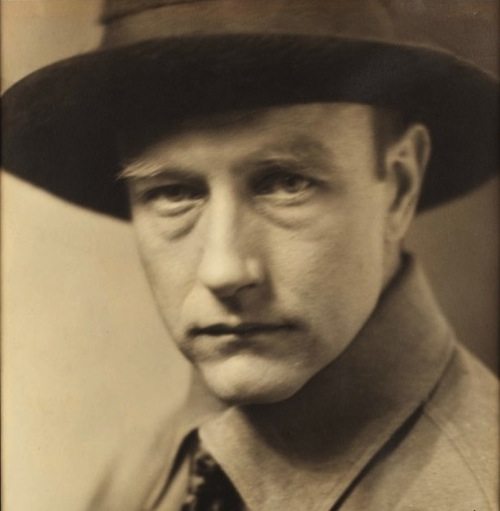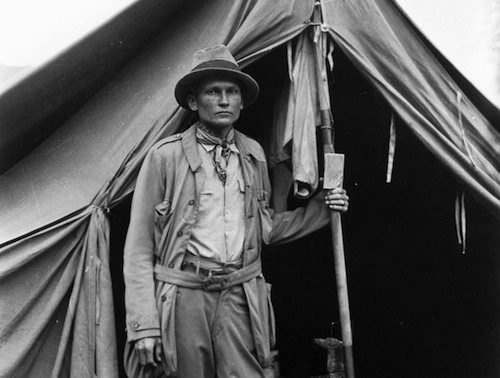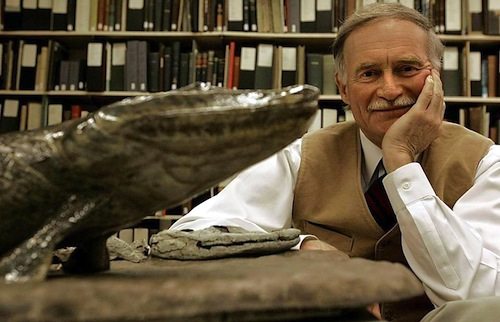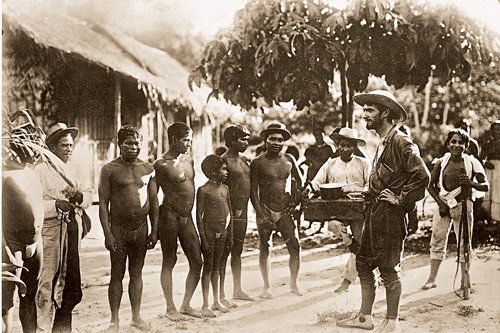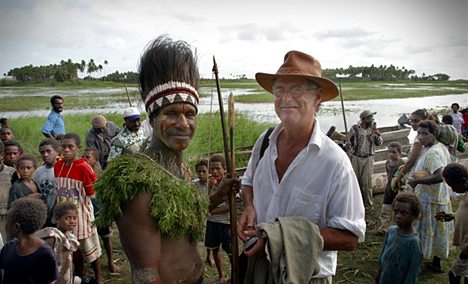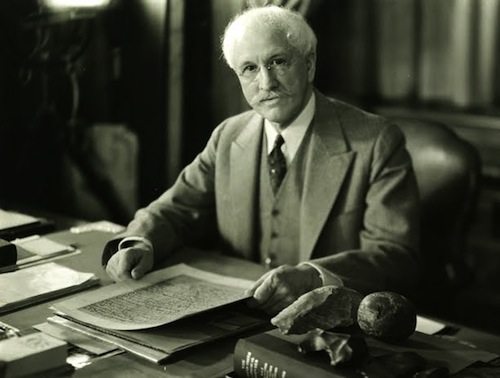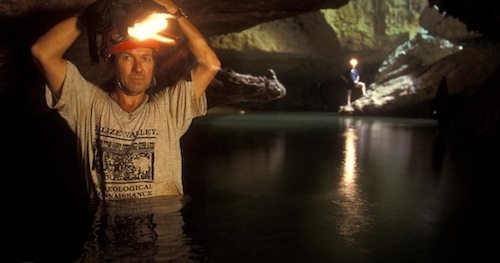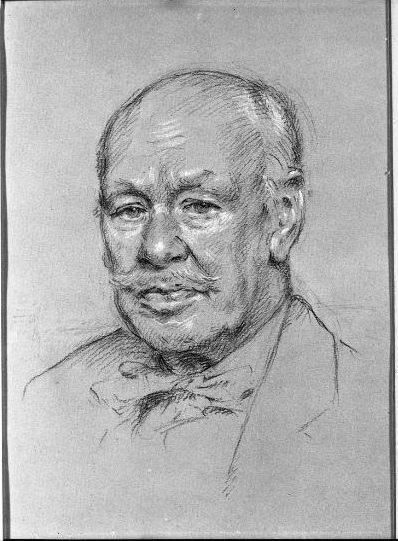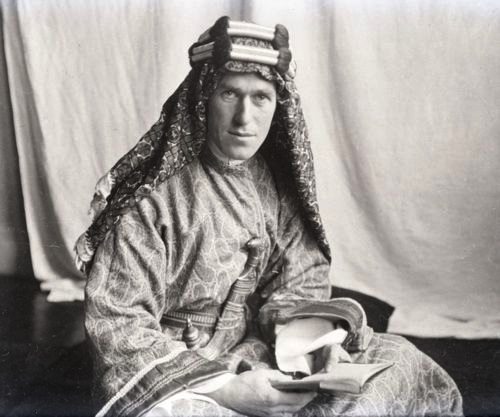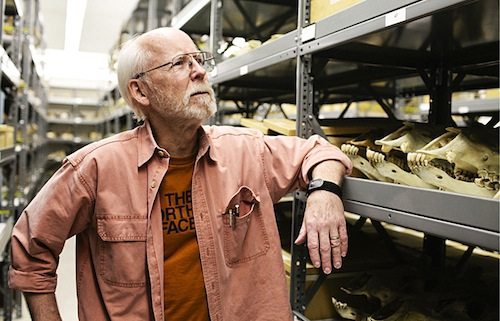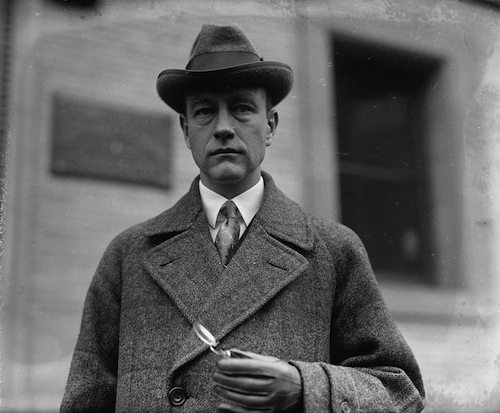Featured Programs
Most professors aren’t in it for the money, and many of the best academics excel through their sheer passion, their love for learning and their insatiable curiosity. Yet some professors, academics and researchers are so passionate and dedicated that they’re compelled to leave their desks behind and become intrepid explorers out in the field.
Escapades such as braving shipwrecks, fighting off polar bears and anacondas, delving into the macabre remains of past centuries, and discovering ancient artifacts have all been par for the course for these 10 incredible real-life Indiana Joneses. These extraordinary men didn’t let their rigorous academic studies temper their desire to see things for themselves. Best yet, they often used their myriad fascinating experiences to influence the lives of thousands of university students.
10. Hiram Bingham III
Hiram Bingham III was born in Honolulu, Hawaii in 1875 and moved to Massachusetts as a teenager to further his education. He got his bachelor’s degree from Yale University in 1898, before attaining another degree from the University of California, Berkeley two years later. Then in 1905, he received his PhD from Harvard University.
In 1907, Bingham began teaching South American history at Yale. The following year – on his way home from Santiago, Chile, where he’d attended the First Pan American Scientific Congress – Bingham traveled through Peru. While there, he became fascinated with Incan ruins, and he would engage in several expeditions to find more. During one of these trips in 1911, farmers led Bingham to the site of Machu Picchu. Although locals (and possibly a couple of foreigners) already knew about the ruins, Bingham is credited with their rediscovery.
Thanks to the backing of the National Geographic Society and Yale University, Bingham and others made further journeys to Machu Picchu to study the site and recover artifacts. This led National Geographic editor Gilbert H. Grosvenor to conclude, “We… are thrilled by the wonders and mystery of Machu Picchu. What an extraordinary people the builders of Machu Picchu must have been.”
9. Farish Jenkins
Known to carry a rifle and a flask of vodka and for pairing his smart attire with a rabbit-fur hat, paleontologist Farish Jenkins was both a rigorous academic and an old-time adventurer. Jenkins studied geology at Princeton, before attending Yale from 1964, earning his master’s degree and doctorate. He even found time to squeeze in a stint with the US Marines, achieving the rank of captain.
Jenkins taught at Columbia University from 1968 and then in 1971 moved to Harvard, where he became a professor. At Harvard, he was known for his eccentricity, animated lectures and imaginative teaching techniques. With his mixture of academic prowess and panache, it’s little wonder that his students dubbed him a real-life Indiana Jones. He was no stranger to exciting escapades, either.
Jenkins’ fieldwork took him to Greenland and Arctic Canada, where he had several close encounters with polar bears. And earlier, while in Africa, he barely escaped being trampled by a black rhino. As for advancing human knowledge, Jenkins made several major fossil discoveries, including one of the world’s oldest-known frogs and a fish with leg-like fins.
8. William Montgomery McGovern
William Montgomery McGovern dove headfirst into danger, excitement and adventure from a young age. Born in New York, McGovern spent many of his early years in Asia, achieving a degree in divinity from a Buddhist monastery in Japan by the time he was 20. In 1922, he went on to get a PhD at Oxford University, before disguising himself and stealing into Tibet – where he was reportedly nearly stoned to death. McGovern wrote a book about the experience, only to turn around and journey to the Amazon and the Andes. While there, he took part in tribal rituals, ate monkeys and caterpillars, and even dispatched with a 28-foot-long anaconda that attacked his boat. Naturally, these adventures were also chronicled in a book.
In 1929, McGovern started teaching at Northwestern University, although from 1937 to 1938 he took time out to work as a war correspondent in the Sino-Japanese War. At Northwestern, his unusual teaching style, fascinating stories and wealthy store of knowledge ensured that his classes were always packed to capacity – even though he was brazenly conservative in a rapidly liberalizing academic environment. McGovern’s published research ranges over Asian culture, political philosophy and comparative politics. Yet his exciting lifestyle and daring explorations led Northwestern University to hail him “our very own Indiana Jones.”
7. Tudor Parfitt
Tudor Parfitt studied Arabic and Hebrew at Oxford University and was awarded his PhD in Jewish history and Judeo-Muslim relations in Palestine from the same institution. In 1972, Parfitt became a lecturer at the University of Toronto. Throughout the mid-1980s and 1990s, his studies took him around Africa and Asia, and he was in South Africa when he struck upon a mystery too intriguing to ignore. Parfitt discovered that a tribe known as the Lemba claimed to have ancient Jewish origins. Although initially skeptical, Parfitt became fascinated by the traditions of the Lemba – which seemed to link them to the Middle East – and he set out on a quest to find out where they had come from: a place that their oral traditions simply call “Sena.”
Parfitt’s journey took him from southeastern Africa to southern Arabia, where he found a valley in Yemen that seemed to fit with all the clues he’d collected – and which, incidentally, is called “Sena” to this day. Perhaps even more incredible is the fact that Parfitt’s mission put him on the trail of the Lost Ark of the Covenant, much like Indiana Jones himself.
6. James Henry Breasted
From 1894, historian and archaeologist James Henry Breasted worked at the University of Chicago, where he became a professor in 1905. Breasted’s studies focused on Egyptology and Oriental history. Still, teaching on its own was not enough for this man. In May 1919, Breasted founded the University of Chicago’s Oriental Institute; then in August the same year, he led an exciting 11-month expedition that wound through Egypt and the areas now known as Iraq, Israel, Lebanon and Syria.
During his journey, Breasted traveled by biplane and boat as well as in horse-drawn wagons and Model T Fords. While looking for ruins on horseback, he encountered armed Arab warriors, and he also found time to meet with King Faisal of Damascus and to excavate and collect artifacts.
Director of the Oriental Institute Gil Stein says, “We live with the heritage of his work – and his vision, fueled by what he saw on his journey in 1919 and 1920.” According to Stein, research carried out at the sites Breasted identified during his trip helped to make the institute “one of the world’s leading centers of Middle Eastern archaeology.” What’s more, Breasted’s intrepid explorations are thought to have inspired the characterization of Indiana Jones.
5. Jaime Awe
Jaime Awe earned his bachelor’s and master’s degrees in anthropology from Canada’s Trent University, before achieving his PhD in archaeology from the University of London, England. These days, he can be found spelunking in darkened caves, wading through chest-deep water, and risking illness from continued exposure to bat dung. And while this may not sound very glamorous, for Awe it’s a small price to pay for his passion.
Awe currently holds the position of director of Belize’s Institute of Archaeology. He has spent over two decades researching Mayan archaeology and has carried out in-depth studies of caves in Belize. The caves were considered sacred by the ancient Maya and were used for conducting rituals and ceremonies – even human sacrifices. In one cave, known as Actun Tunichil Muknal (“Cave of the Crystal Sepulchre”), the bones of 14 sacrifice victims were found a single chamber. One of the skeletons, that of a young woman, was so calcified that it caught the light like crystal, and it is now known as “The Crystal Maiden.”
Interestingly, Awe initiated legal proceedings following the release of Indiana Jones and the Kingdom of the Crystal Skull. Apparently, the skull featured in the movie bears a striking resemblance to a Belizean artifact that was reportedly stolen almost a century back. Awe claims that the movie studios are profiting from a valuable relic while not distributing any of the revenue to the country of Belize. This professor of archaeology has led excavation teams, published multiple papers on his findings, and lectured at universities in the US, Canada and the UK.
4. Langdon Warner
Art historian and Harvard professor Langdon Warner may well be one of the individuals on which Steven Spielberg’s Indiana Jones character is based. Warner took his passion for learning on the road and in 1924 traveled as far as the Mogao Caves in the Chinese province of Tun-huang. These caves contained historic murals from the Tang dynasty, and Warner believed that Russian soldiers had been vandalizing the sites. To preserve the artworks, Warner arranged to buy them from the locals and removed them using glue, cloth and plaster of Paris.
A total of 26 frescoes were taken using this process, and they are currently housed in Harvard University Art Museums. James Marshall Plumer, author of Ars Orientalis Vol. 2, states that Warner “did more than any other person toward giving Far Eastern art a permanent place in our university curricula and in our private and public collections.”
3. Thomas Edward Lawrence
Thomas Edward (T.E.) Lawrence, better known as Lawrence of Arabia, studied history at Oxford University, graduating in 1910. His thesis was based on the research he gathered during a three-month, 1,000-mile (1,600-kilometer) walking tour of Syria. After graduating, Lawrence took up postgraduate research into medieval pottery, but when the opportunity arose to become an archaeologist, he jumped at the chance.
Lawrence’s archaeological trips took him all over the Ottoman Empire, through what is now Syria, Iraq, Jordan and Palestine. Because of this, at the outbreak of World War I, it made perfect sense for “El Aurens” to be made an intelligence officer. He fulfilled the part well and was a key player in the Arab Revolt – to the point where the Ottoman Turks put a £15,000 ($23,322) reward on his head. Lawrence survived, though, and was awarded the rank of colonel for his achievements during the war. Following the conflict, he started writing his famous book Seven Pillars of Wisdom and also accepted a research position at Oxford University.
2. Jim Patton
American evolutionary biologist and mammalogist Jim Patton received his bachelor’s degree in anthropology from the University of Arizona in 1963. By 1969, he had achieved a master’s degree and a PhD in zoology from the same institution. Today, Patton has an amazing six species and one genus named after him, and he has written almost 200 academic publications.
This intrepid professor and curator at the Museum of Vertebrate Zoology in the University of California, Berkeley has spent his life studying small mammals, collecting specimens from the US and at least 14 other countries around the world. His travels have taken him to such far-flung places as Brazil, the Galapagos Islands, Venezuela, Cameroon, Vietnam, Iran, Colombia and Taiwan.
Patton is no stranger to adventure, either, and in fact he has been shipwrecked on five separate occasions. Once, in 1966, his rowboat smashed into rocks along the western coast of Mexico. He was marooned for around 10 days and had to eat rats to survive. “They have lots of protein,” Patton explains. Another time, he and 12 others were stranded in the Pacific Ocean in a flimsy life raft after their boat burned to cinders en route to Costa Rica. Fortunately, they were all rescued soon afterwards. “He’s kind of a demi-god in Brazilian mammalogy,” says current museum director Craig Moritz. But, he adds, “Whatever you do – don’t get on a boat with him.”
1. Roy Chapman Andrews
Roy Chapman Andrews’ path to adventure began in 1906, when he worked as a janitor at the American Museum of Natural History – but he wasn’t cleaning floors for long. Andrews combined studying with work and obtained a master’s degree in mammalogy from Columbia University. He then embarked on a series of epic journeys, traveling as far afield as Mongolia and beyond. Between 1909 and 1910, he collected snakes and lizards from the East Indies, and in 1913 he filmed seals while on a trip to the Arctic. Then in the 1920s he discovered fossils and dinosaur bones during four excursions to the Gobi Desert.
On his travels, Andrews found several previously unknown species of dinosaurs and discovered the fossilized remains of mammals that lived alongside the prehistoric reptiles. Andrews and his team were also the first explorers to uncover dinosaur nests. And he even wrote a number of books for children, which have inspired a whole new wave of paleontologists.
Andrews was, in the words of a colleague at the American Museum of Natural History, an “explorer, dinosaur hunter, exemplar of Anglo-Saxon virtues, crack shot, fighter of Mongolian brigands, [and] the man who created the metaphor of ‘Outer Mongolia’ as denoting any exceedingly remote place.” He also seems to have sported a very stylish hat – rather like Indiana Jones himself.
